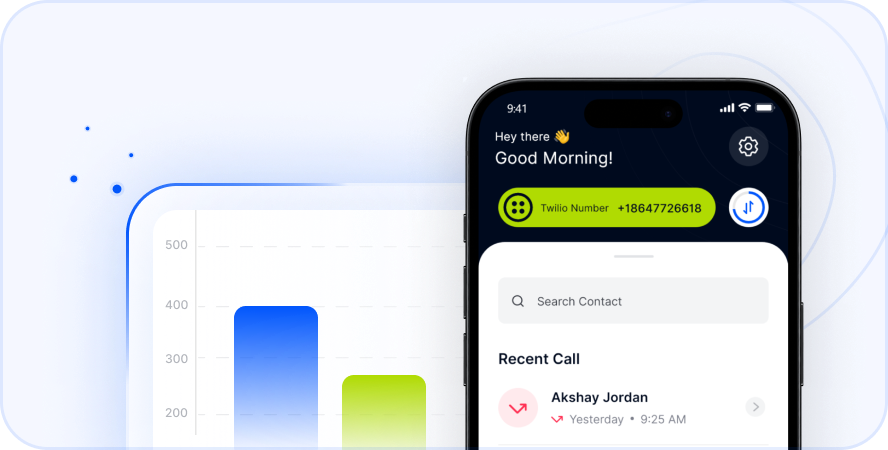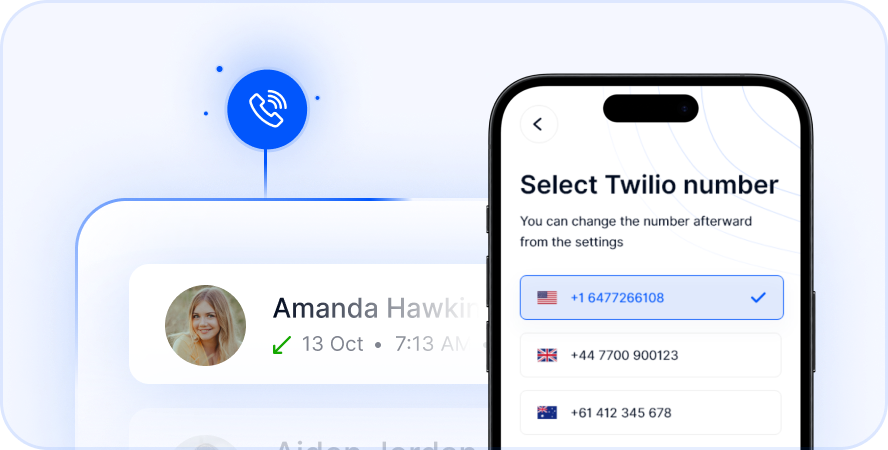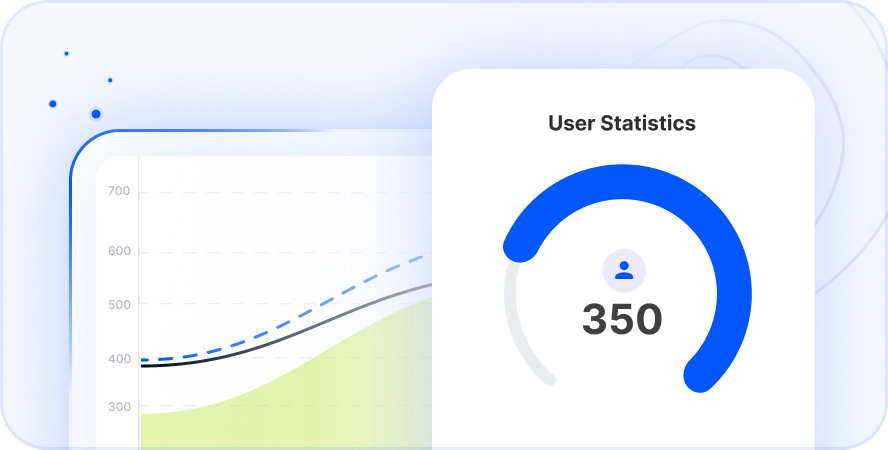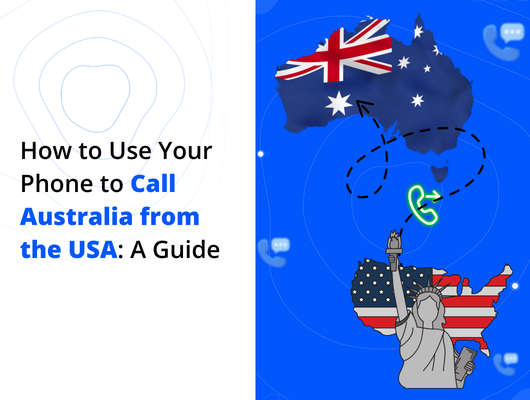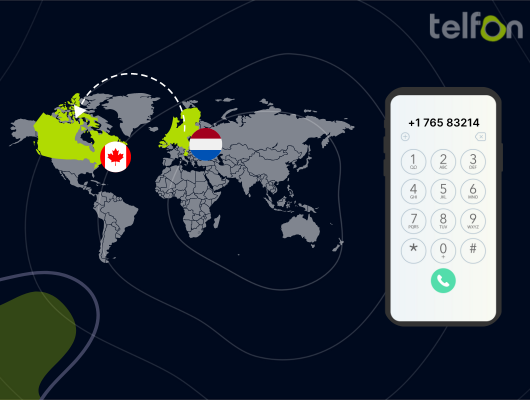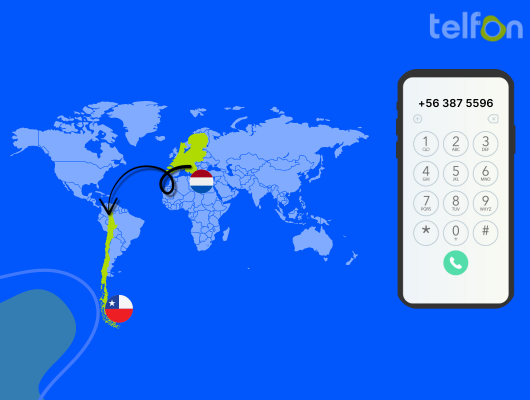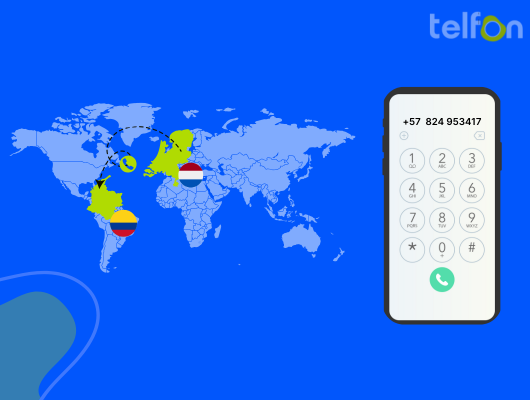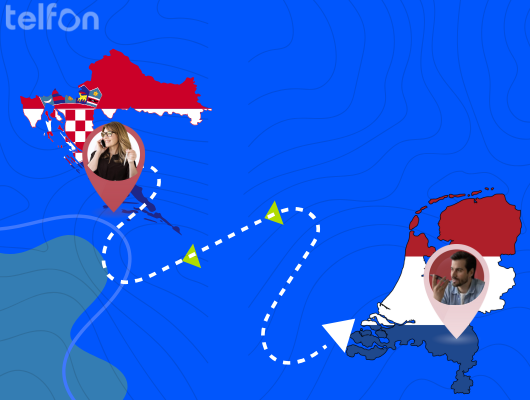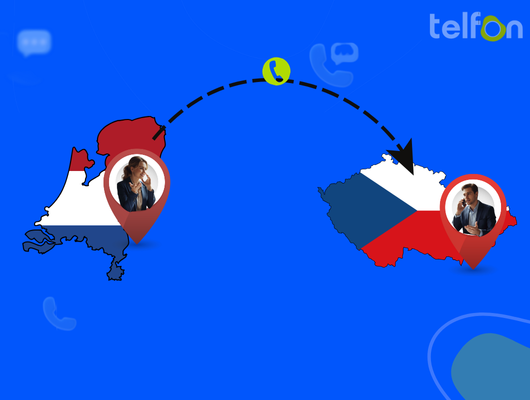Making an international call from the USA to Australia can feel complicated at first glance. However, with the correct information and tools, it’s actually quite straightforward. Whether you are calling for business, connecting with family and friends, or exploring new opportunities, this guide will walk you through the easiest and most cost-effective ways to make those calls successfully.
By the end of this article, you will understand the exact steps for dialing Australian numbers, learn how to save on international calling costs, and discover useful app solutions for smooth communication. We will also cover the right phone number format, the best time to call considering time zones, and how cloud telephony services like Telfon can simplify your international communication needs. Understanding these details will make calling across continents much less daunting and more efficient. For further information on international dialing, you can refer to resources like the International Telecommunication Union’s country codes list.
Understanding the Basics: Dialing Steps & Codes
Before you place your call, you need to know the specific sequence of numbers required to connect from the United States to Australia. This sequence involves several components that route your call correctly across international networks. Familiarizing yourself with these elements ensures your call goes through without issues.

The USA Exit Code (011)
The first number you need to dial is the exit code for the United States. This code tells your phone carrier that you are making a call outside of the country. The standard exit code for calling from the USA is 011. You must dial this code before any other numbers for an international call.
The Australia Country Code (+61)
After the US exit code, you need to enter the country code for your destination. The country code directs your call to the correct country’s telecommunications network. The country code for Australia is 61. Note that you do not include the plus (+) symbol when dialing from a standard phone; the plus symbol is often used to indicate that the country code follows.
Australian Area Codes (and the Leading Zero)
Australian phone numbers often include an area code. This code specifies a particular geographic region within Australia. For instance, Sydney uses the area code 02, Melbourne uses 03, Brisbane uses 07, and Perth uses 08. However, when you dial an Australian number from outside Australia, you must drop the leading zero (0) from the area code. This is a common practice for international dialing. Mobile phone numbers in Australia do not have separate area codes; they typically start with 04 domestically, but internationally you would drop the 0 and dial 61 4 followed by the rest of the number.
Assembling the Dialing Sequence
Putting it all together, the standard format for calling an Australian landline from the USA is:
USA Exit Code + Australia Country Code + Australian Area Code (without the 0) + Local Phone Number
This translates to:
011 + 61 + [Area Code without 0] + [8-digit Local Number]
For example, to call a landline number in Sydney (area code 02) with the local number XXXX XXXX, you would dial:
011 61 2 XXXX XXXX
For an Australian mobile number (which starts with 04 domestically and is typically 9 digits long), you would drop the 0 and dial:
011 61 4XX XXX XXX
Understanding this structure is crucial for making a successful international call..
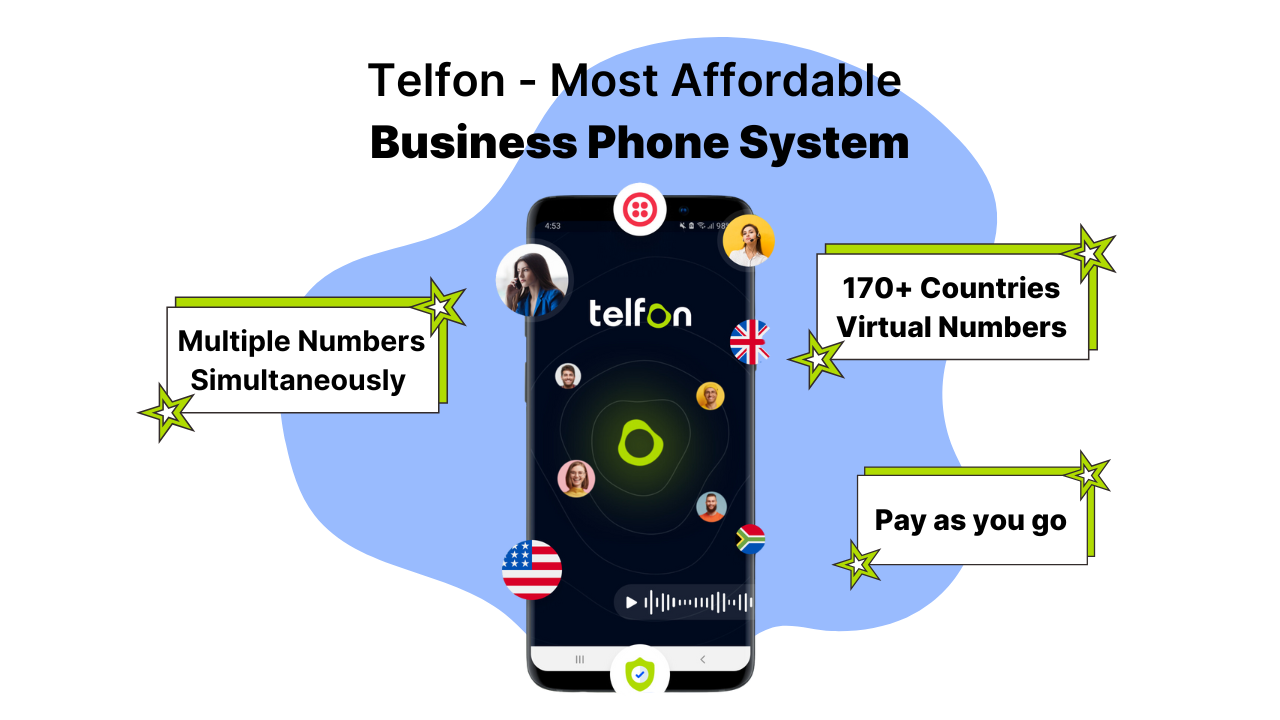
Exploring Your Options for Calling Australia
You have several options when it comes to calling Australia from the United States. The best method for you will depend on factors like cost, call quality, convenience, and whether you are calling a landline or a mobile phone. Let’s explore the most common ways to connect.
Traditional Phone Lines (Mobile or Landline)
Using your existing mobile phone or a landline is the most straightforward method if you know the dialing sequence. You simply dial the numbers in the order discussed above (011 + 61 + area code – 0 + local number or 011 + 61 + mobile number without the leading 0).
Pros:
- Simple and familiar dialing process.
- No extra apps or software needed.
Cons:
- Can be very expensive, especially for long calls, without an international calling plan.
- Call quality might vary depending on your provider.
- Lack of advanced features like call recording or multiple lines.
Standard carrier rates for international calls are often high, making this method less ideal for frequent or lengthy conversations.
Internet-Based Calling (VoIP Services)
Voice over Internet Protocol (VoIP) services allow you to make calls using your internet connection instead of traditional phone lines. This technology routes voice traffic digitally, often resulting in lower costs for international calls. Many popular apps utilize VoIP technology.
Well-known consumer VoIP apps include Skype, WhatsApp, and Google Voice. Some of these apps offer free calls between users on the same platform. However, if you need to call a standard Australian landline or mobile number, charges usually apply, although these rates are typically much lower than traditional carriers.
Pros:
- Significantly more affordable than traditional phone lines.
- Often includes features like video calls and messaging.
- Accessible from various devices (smartphones, computers).
Cons:
- Requires a stable internet connection; call quality can suffer with poor connectivity.
- Requires downloading and setting up an app.
- Free calls are usually limited to app-to-app communication.
Beyond these basic apps, specialized cloud telephony solutions build upon VoIP, offering enhanced features and reliability.
Dedicated International Calling Services
For individuals and businesses who make international calls frequently, dedicated services designed specifically for this purpose offer a compelling option. These services leverage VoIP technology but often provide better call quality, more competitive rates, and additional features valuable for regular international communication.
Telfon, for instance, is a cloud telephony platform that provides virtual phone numbers and facilitates international calls to over 180 countries, including Australia. It integrates features like virtual numbers, call recording, SMS, and WhatsApp compatibility, making it a robust solution beyond simple app-to-app calls. Services like Telfon are built to offer reliability and a wider range of communication tools tailored for international use.
Practical Tips for Calling Australia from the USA
Making a successful and affordable call to Australia involves more than just knowing the dialing code. Considering the time difference and utilizing cost-saving strategies can significantly improve your calling experience.
Mastering the Time Zones
Australia is a vast continent with multiple time zones, and they are significantly ahead of the United States. Understanding the time difference is crucial to avoid calling someone in the middle of the night. Australia has three main time zones:
- Australian Eastern Standard Time (AEST): Covers New South Wales, Victoria, Queensland, Tasmania, and the ACT. It is UTC+10.
- Australian Central Standard Time (ACST): Covers South Australia and the Northern Territory. It is UTC+9:30.
- Australian Western Standard Time (AWST): Covers Western Australia. It is UTC+8.
Keep in mind that daylight saving time (DST) is observed in some Australian states (NSW, VIC, SA, TAS, ACT) during their summer months (roughly October to April), which shifts their clocks forward by one hour. Queensland and Western Australia do not observe DST.
Given the difference, often 14 to 19 hours depending on location and time of year, calling during your late afternoon or evening in the USA often corresponds to morning or midday business hours the next day in Australia.
Here is a general guide comparing US time zones (without DST) to major Australian cities (during Australian Standard Time, roughly April-October):
| Your US Time Zone (No DST) | Your Time Example | Australian City | Australian Time Zone | Australian Time (Next Day) | Best Calling Window (US Time) |
|---|---|---|---|---|---|
| Eastern (EST, UTC-5) | 5:00 PM | Sydney/Melbourne | AEST (UTC+10) | 10:00 AM | 4:00 PM – 7:00 PM |
| Central (CST, UTC-6) | 5:00 PM | Sydney/Melbourne | AEST (UTC+10) | 11:00 AM | 3:00 PM – 6:00 PM |
| Mountain (MST, UTC-7) | 5:00 PM | Sydney/Melbourne | AEST (UTC+10) | 12:00 PM (Noon) | 2:00 PM – 5:00 PM |
| Pacific (PST, UTC-8) | 5:00 PM | Sydney/Melbourne | AEST (UTC+10) | 1:00 PM | 1:00 PM – 4:00 PM |
| Eastern (EST, UTC-5) | 5:00 PM | Perth | AWST (UTC+8) | 8:00 AM | 7:00 PM – 10:00 PM |
Always double-check the current time in the specific Australian city you are calling, especially during transitions to and from daylight saving time.
Strategies for Cutting Calling Costs
International calls can become expensive quickly if you are not mindful of the costs. Fortunately, several methods can help you reduce your phone bill when contacting Australia.
- Utilize VoIP Services: As mentioned earlier, services like Skype, WhatsApp, Google Voice, and Telfon are typically far more affordable than traditional carriers for calls to landlines and mobile numbers in Australia. They offer competitive per-minute rates or subscription plans.
- Take Advantage of Free App-to-App Calls: If the person you are calling in Australia uses the same app as you (like WhatsApp or Skype), calls between users of that app are usually free, provided you both have an internet connection. This is often the cheapest option if applicable.
- Consider Dedicated International Calling Plans: Your mobile carrier might offer international calling add-ons or plans. These can provide a bundle of minutes for a fixed monthly fee or reduced per-minute rates. Compare these plans carefully with VoIP service rates to see which offers the best value for your typical calling volume. Services like Telfon often offer pay-as-you-go pricing that can be more cost-effective than bundled plans for variable usage.
- Look for Promotions: Some VoIP providers or calling card services occasionally offer promotional rates for specific countries like Australia. Keep an eye out for these deals.
Choosing the right service and being aware of rates is key to managing costs effectively.
When Calling Isn’t Necessary: Messaging and Video
Sometimes, a voice call isn’t the only or best way to communicate. Messaging and video calls offer valuable alternatives, especially when time zone differences are difficult to navigate or you need visual communication.
Video calling apps like Zoom, Google Meet, Skype, and WhatsApp allow for face-to-face conversations over the internet. These calls are typically free between users of the same service, regardless of location, as long as you have a stable internet connection. This is great for personal catch-ups or virtual business meetings.
Messaging apps such as WhatsApp, Signal, and Telegram provide instant text messaging. Sending international text messages via traditional carriers can be expensive. Using these apps allows you to send messages, photos, and videos for free over Wi-Fi or data, offering a continuous way to stay in touch without worrying about per-message costs. Many modern platforms like Telfon also include integrated SMS capabilities, sometimes offering better rates for sending messages to standard mobile numbers in Australia.
Frequently Asked Questions (FAQs)
Here are answers to some common questions about calling Australia from the United States.
Q1. What is the cheapest way to call Australia from the USA?
Generally, using VoIP services or communication apps like WhatsApp, Skype, or Telfon is the most affordable way. Calls between users of the same app are often free. Calls to landlines or mobiles through these services have lower per-minute rates than traditional carriers.
Q2. Can I call Australia directly from my US mobile number?
Yes, you can. You need to dial the USA exit code (011), followed by the Australia country code (61), the area code (without the leading 0 if applicable), and the local number. Be aware of potentially high international calling rates from your standard mobile plan.
Q3. What is the country code for Australia?
The country code for Australia is +61. When dialing internationally, you will use 61 after your country’s exit code.
Q4. Can I send text messages to Australia from the USA?
Yes, you can send SMS messages. However, standard international SMS fees from your mobile carrier can be high. Using messaging apps over the internet or a service like Telfon which offers international SMS features can be more cost-effective.
Q5. Does Daylight Saving Time in Australia affect when I should call?
Yes, Daylight Saving Time (DST) in some Australian states shifts their clocks forward by one hour during their summer months. This changes the time difference between you and your contact. Always check the current local time in Australia before calling, especially when DST starts or ends.
Conclusion
Calling Australia from the USA is no longer a complex or necessarily expensive task. By understanding the correct dialing sequence, exploring the various calling methods available—from traditional lines to cost-effective VoIP services—and planning your calls around time zones, you can easily connect with contacts down under.
Services like Telfon represent the evolution of international calling, offering not just competitive rates but also a suite of features beneficial for both personal and business communication across continents. Whether you prioritize cost, convenience, or advanced features like virtual numbers and integrated messaging, there is a suitable option to make your calls to Australia simple, reliable, and affordable.


